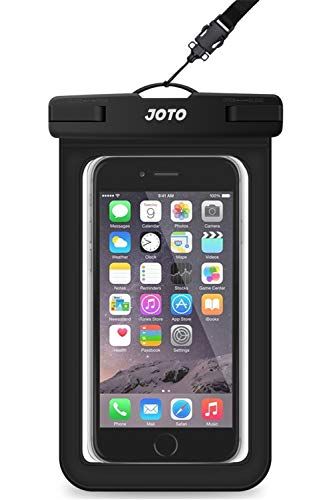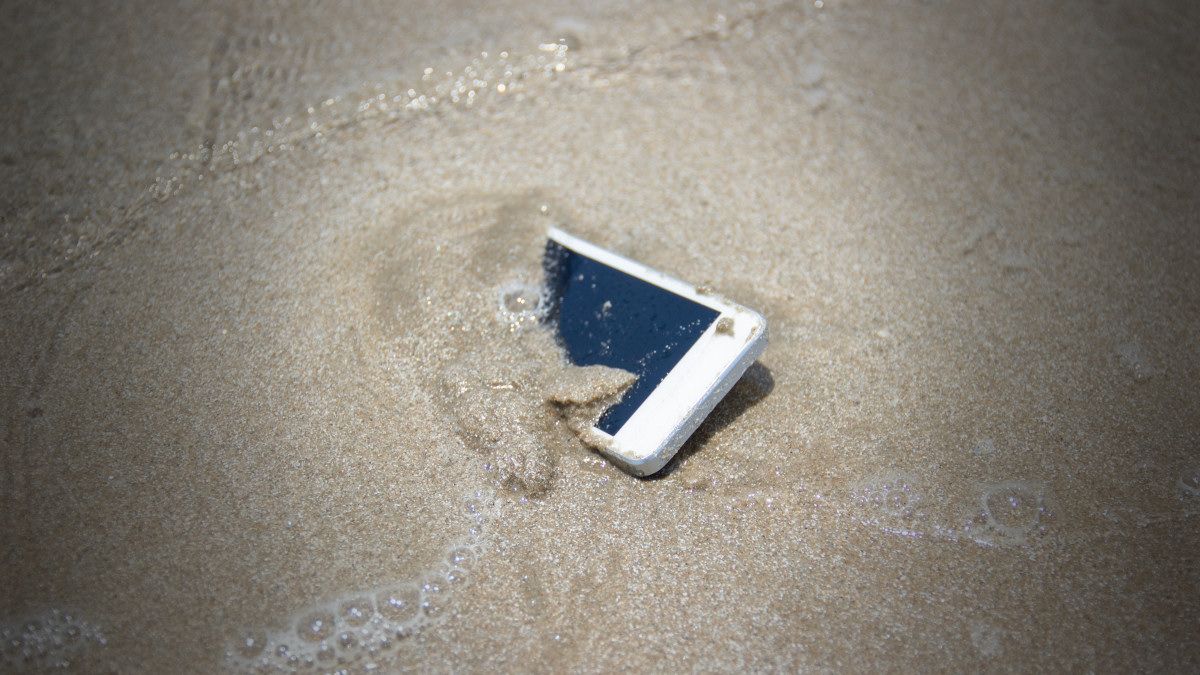Quick Links
You're having a great day at the beach or on the ocean, but your fingers slip, and splash! Down goes your smartphone into the briny deep---or hopefully, just into a few inches of salt water. Either scenario can be devastating, so here's what you should do.
First, Try to Find It
Unless you're in a situation where it would be dangerous to retrieve the phone, you should try to locate your phone and get it out of the water as quickly as possible. Here's a few ideas: If you can't see the phone, try to feel the phone underwater with your feet, or grab a fishing net and scoop up the sand until you find it.
If you can't find the phone, you'll probably need to consider it a total loss. Contact your mobile phone carrier and tell them what happened, and ask them to assign your old phone number to a new device. Using remote management tools like "Find My" in the Apple ecosystem, you can report your device as lost or stolen, deactivate it remotely, or remove it from your account. If you have local or cloud backups (for Android or iPhone), you can use them to restore your data on a new device later.
If you have AppleCare+ with Theft and Loss, you can file a claim for a lost iPhone---as long as you had "Find My" enabled on it.
Turn It Off, Dry Phone as Much as You Can
Once your phone is out of the water, power it off completely. Use a clean towel to dry the phone off as much as possible. If possible, remove the SIM card tray, any memory card trays, and the battery if it is not built into the phone. If it's in a case that is not waterproof, remove the case as well.
If your smartphone is already in a waterproof case or features water resistance and wasn't in the water for very long, turn the phone off and rinse the phone (in the waterproof case, if it has one) under clean fresh water (not salt water.) Dry it off with a towel, then let it sit for several hours to dry off before attempting to use it again. If all works well, then you should be good to go.
If your phone isn't water resistant, you may have heard that placing your smartphone in rice will help dry it out, but that's just a myth. Rice will do nothing, and leaving it sitting there will give the saltwater stuck inside the phone body extra time to corrode the electronics. If you ever want to use the phone again, you're in a race against time to disassemble the phone and clean it out before corrosion permanently damages the internal circuitry.
If Possible, Take the Phone Apart
If you feel qualified and capable to disassemble your phone, use the proper tools to open it up as quickly as possible. iFixit publishes free guides that include detailed steps on how to disassemble many popular smartphone models.
Once the phone is open, rinse out the inside thoroughly with distilled water, gently brush away any corrosion with a soft brush, then let the phone sit in a bath of 90% rubbing alcohol for an hour, swishing it around a bit to displace any trapped water. After that, let all the parts air dry for at least 24 hours, then re-assemble them and see if the device works. If it works, you're probably all set. Back up the device while it is still working in case there is a failure again from uncorrected water damage.
Otherwise, Take it to a Professional
Obviously, the disassembly steps above require a certain level of technical know-how and also the tools and parts to safely open a modern smartphone without damage. So if you're not comfortable with taking your phone apart, take it as soon as possible to a qualified smartphone repair shop. Tell them you dropped your phone in salt water, and they should know what to do. The phone will need immediate disassembly and deep cleaning inside and out if you want to save it.
If they aren't willing to work on it right away and the phone is very important, take the phone somewhere else. If you have an iPhone, you could consider getting an appointment at an Apple store, for example.
An Ounce of Prevention
Supposedly, Benjamin Franklin once said, "An ounce of prevention is worth a pound of cure." That means if you take small steps to prevent trouble before it happens, you can save yourself from a much bigger crisis later.
In this case, your ounce of prevention might be leaving your smartphone on dry land when you're near the water. But barring that, you could also place your smartphone in a waterproof case or dry bag before going anywhere near the ocean.

JOTO Universal Waterproof Phone Pouch
Inexpensive insurance against water exposure for a smartphone.
For example, this JOTO Universal Waterproof Phone Pouch is inexpensive insurance against accidental water exposure for your smartphone. Pair that with a floating strap, and even if you accidentally drop your smartphone in the water, you'll be able to scoop it up without it sinking to the bottom of Davy Jones's locker. Good luck, and stay safe out there!

